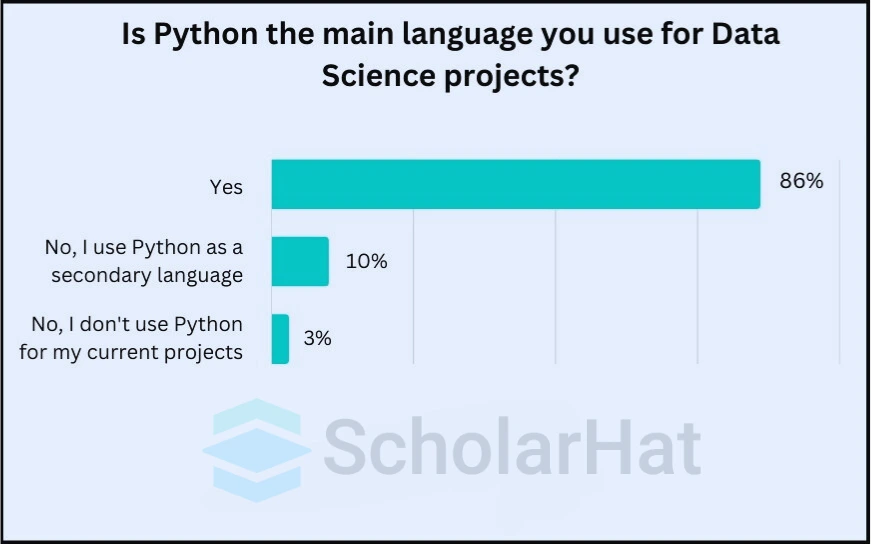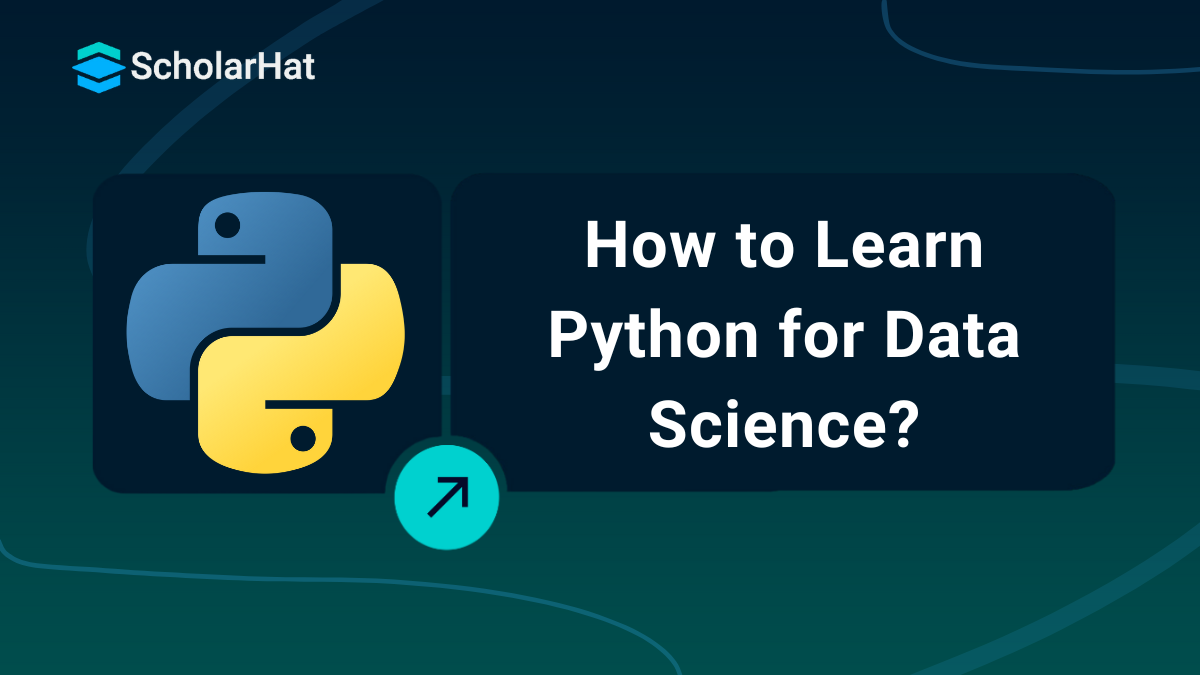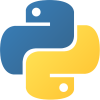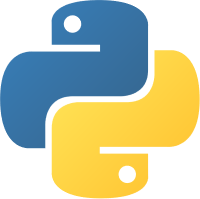07
NovHow to Learn Python for Data Science: A Complete Guide
Python for Data Science
Python is one of the Most In-Demand Programming Languages for data science and is known for its simplicity and versatility. It provides powerful libraries like Pandas, NumPy, and Matplotlib, which make data manipulation, analysis, and visualization efficient and straightforward. But what is Python for data science? It is the use of Python's features and libraries to process and gain insights from data, making it an essential tool for data scientists.
In this Python tutorial, you’ll learn the importance of Python in data science, why it’s the preferred language in the field, and how it simplifies complex tasks. Only 10% of learners become Python experts. Be one with our Free Python Online Course—start your journey now!
Why Learn Python for Data Science?
Python is a go-to language for data science due to its simplicity, extensive libraries, and strong community support. It is designed to handle data-driven tasks efficiently, making it the top choice for professionals and beginners alike. Additionally, its versatility allows it to adapt to a wide range of data science workflows.
Here are some key reasons to learn Python for data science:
- Simplicity: Python's readable syntax makes it easy to learn and apply, even for beginners.
- Powerful Libraries:Libraries like pandas, NumPy, matplotlib, and sci-kit-learn streamline data manipulation, analysis, and machine learning.
- Data Visualization: Python supports creating insightful and interactive graphs with libraries like Seaborn and Plotly.
- Community Support: Python has a massive community of developers and resources, offering guidance and tools.
- Flexibility: Python integrates seamlessly with other tools and technologies, enhancing workflow efficiency.

Prerequisites for Learning Python for Data Science
Before diving into Python for data science, it's helpful to have a foundational understanding of programming and data concepts. These prerequisites will make your learning journey smoother and more efficient.
Here’s what you need to know:
- Basic Programming Knowledge: Familiarity with concepts like variables, loops, and conditional statements is beneficial.
- Mathematics and Statistics: Understanding linear algebra, probability, and basic statistics is essential for data analysis and machine learning.
- Data Fundamentals: Knowledge of data types, databases, and data formats (CSV, JSON) is useful.
- Problem-Solving Skills: Ability to approach and solve analytical problems logically.
- Interest in Data: A keen interest in working with and interpreting data is a strong motivator.
If you’re a beginner, don’t worry! Many of these concepts can be learned alongside Python as you progress in your data science journey.
| Read More: Skills Required for Data Scientist |
Step-by-Step Guide to Learning Python for Data Science
Learning Python for data science involves a systematic approach to mastering programming basics, essential libraries, and core data science concepts. Follow these steps to excel:
Step 1: Understanding the Basics of Python
Begin by mastering the fundamentals of Python programming:
- Variables and Data Structures: Learn to use variables, lists, tuples, dictionaries, and sets to organize and manage data effectively.
- Basic Operators: Understand arithmetic, comparison, and logical operators to perform operations and comparisons.
- Control Flow: Practice writing conditional statements like if-else and loops such as for and while to control program execution.
- Functions and Methods: Build reusable code with custom Python functions and explore built-in Python methods.
These core Python concepts form the foundation for more advanced data science tasks.
Step 2: Learn Essential Python Libraries for Data Science
Python’s powerful libraries are critical for data manipulation and analysis:
- NumPy: Perform efficient numerical computations and handle multi-dimensional arrays.
- pandas: Manipulate and analyze structured data using DataFrames.
- Matplotlib and Seaborn: Create data visualizations to uncover trends and insights.
- Scikit-Learn: Develop and evaluate machine learning modelsin Machine Learning with ease.
These libraries enable you to tackle tasks like data preprocessing, exploration, and model building.
Step 3: Understanding Data Science Concepts
Grasp essential data science concepts to work efficiently with data:
- Data Collection: Use Python for web scraping, accessing APIs, and fetching data from databases.
- Data Cleaning: Handle missing values, inconsistencies, and outliers for clean datasets.
- Exploratory Data Analysis (EDA): Conduct statistical analysis and create visualizations to identify patterns and relationships.
- Machine Learning: Learn about supervised and unsupervised learning, focusing on algorithms like classification and regression.
Applying these data science techniques will help you analyze and interpret data effectively, making informed decisions.
Common Challenges When Learning Python for Data Science and How to Overcome Them
While learning Python for data science is rewarding, it comes with challenges. Here are three common obstacles and strategies to overcome them:
1. Struggling with Programming Basics
Challenge: Beginners often find it difficult to grasp fundamental concepts like loops, functions, and data structures.
Solution: Break the learning process into smaller chunks. Focus on one concept at a time and practice using interactive coding platforms like Codecademy or Replit. Regular practice solidifies understanding.
2. Difficulty Working with Large Datasets
Challenge: Handling and processing large datasets can be intimidating, especially when dealing with missing values and data inconsistencies.
Solution: Learn and apply data manipulation libraries like pandas. Use tutorials to master common tasks such as filling in missing values, transforming datasets, and filtering data. Start with small datasets to build confidence before tackling larger ones.
3. Overwhelmed by Machine Learning Concepts
Challenge: Concepts like training models, choosing algorithms, and understanding evaluation metrics can feel overwhelming for beginners.
Solution: Start with simple machine learning models, such as linear regression and decision trees, using libraries like Scikit-Learn. Follow step-by-step guides and apply models to beginner-friendly datasets like the Iris Dataset. Build a strong foundation before diving into advanced topics like deep learning.
By addressing these challenges systematically, you can make your Python learning journey more manageable and enjoyable.
Future Scope of Python in Data Science
Python continues to be one of the most popular and powerful programming languages in the world of data science. Its versatility, rich libraries, and active community make it a go-to choice for handling data-related tasks. As technology evolves, so does Python's role in data science. Here's a look at its future scope:
1. Increased Demand for Data Scientists
The demand for data scientists is rapidly growing as organizations generate more data than ever before. Python, with its easy-to-learn syntax and advanced capabilities, will remain in high demand, allowing data scientists to extract insights, build predictive models, and contribute to data-driven decision-making.
2. Integration with Advanced Technologies
Python's integration with cutting-edge technologies like artificial intelligence (AI), machine learning (ML), and deep learning (DL) continues to expand. Python libraries such as TensorFlow, Keras, and PyTorch are widely used for building deep learning models, and this trend is expected to increase with the rise of automation and AI-powered systems.
3. Growth of Python in Big Data Analytics
As the size of data increases, the need for efficient analysis tools becomes critical. Python's integration with big data frameworks like Apache Spark and Hadoop makes it a prime candidate for big data analytics. Python's flexibility allows data scientists to analyze large datasets quickly and efficiently, ensuring it remains indispensable in big data processing.
| Read More: Data Scientist Salary in India |
4. Emergence of Data Science in New Fields
Python's role in data science is not limited to traditional sectors. It is now finding applications in emerging industries such as healthcare analytics, fintech, and IoT (Internet of Things). As new data sources continue to emerge, Python's flexibility will allow it to adapt and support the growth of data science in diverse fields.
5. Strong Community and EcoSystem
Python's active open-source community is continually evolving, contributing to the development of new libraries, frameworks, and tools. This support ensures that Python remains at the forefront of data science innovations. As more developers and data scientists collaborate, Python's ecosystem will continue to expand, offering new solutions for data analysis and machine learning.
| Read More: Data Science Interview Questions and Answers |
summary
Python is a dominant language in the field of data science, offering powerful libraries for data analysis, visualization, and machine learning. With its adaptability to emerging technologies like AI and big data analytics, Python remains a go-to tool for data professionals. As the demand for data scientists grows, the future of Python in data science looks even more promising, with vast opportunities for innovation.
85% of companies prioritize Full-Stack Python Developers. Join our Full-Stack Python Developer Training and be their top pick!
Did You Know? Quiz - How to Learn Python for Data Science
Q1: "Python is a popular language for data science because of its extensive libraries."
- True
- False
Q2: "Learning Python for data science requires mastering deep learning algorithms from the start."
- True
- False
Q3: "Data visualization is a key skill in Python for data science."
- True
- False
Q4: "You need to learn machine learning algorithms immediately after mastering Python syntax."
- True
- False
Q5: "Data wrangling is a vital part of learning Python for data science."
- True
- False
FAQs
Take our Python skill challenge to evaluate yourself!

In less than 5 minutes, with our skill challenge, you can identify your knowledge gaps and strengths in a given skill.






